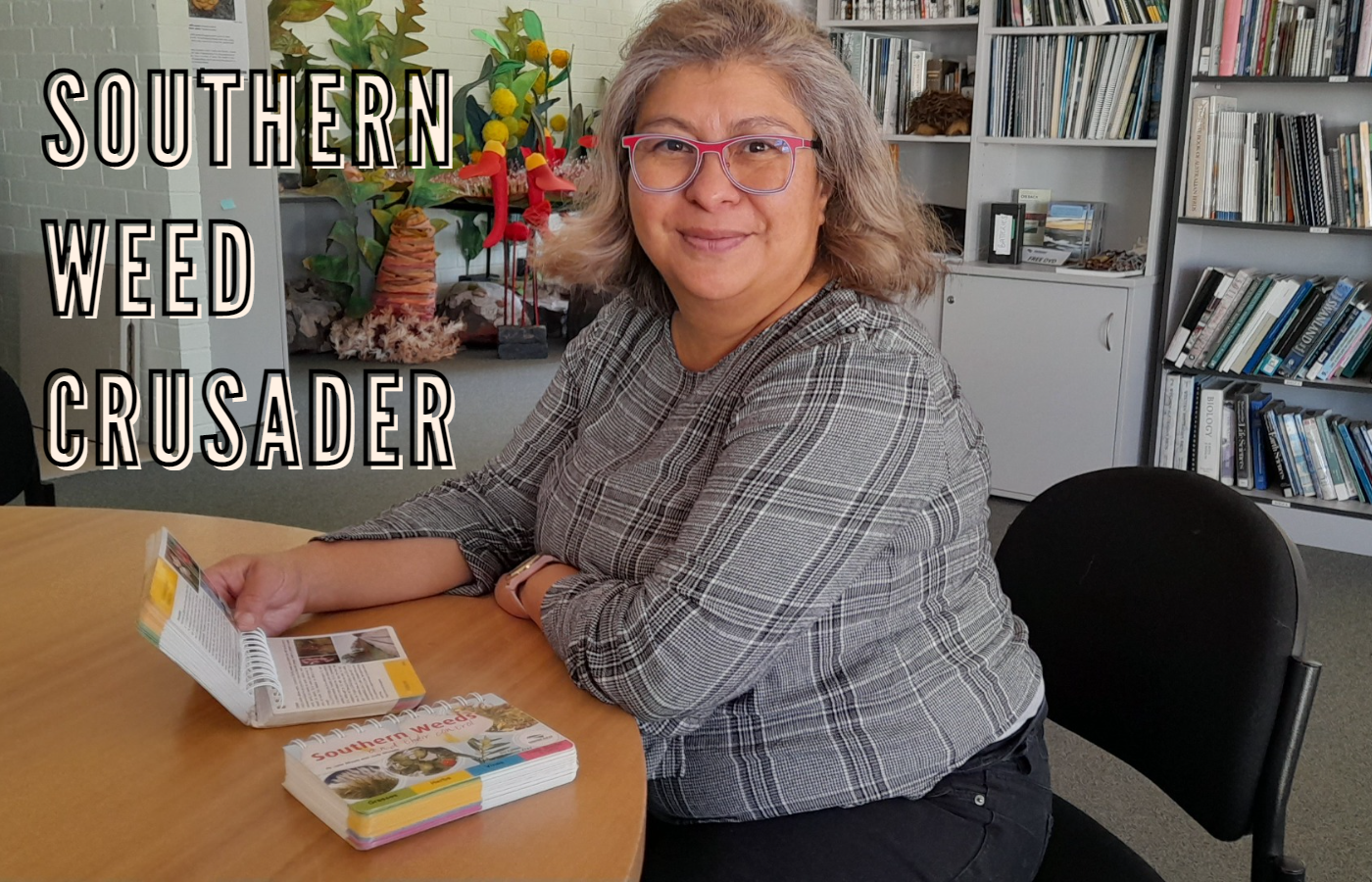From the desk of Dorothy, Project Officer Communications
American agricultural scientist George Washington Carver was right when he said a weed was just a plant in the wrong place, but there are some plants that are not welcome in the Esperance landscape.
South Coast NRM Ramsar Project Officer, Claudia Magana, is one of the locals on the frontline of weed control in the region. While she agreed that weeds are simply plants growing in a place they should not, she pointed out that some aggressive weeds, those which thrived in local conditions, could take over gardens, displace native plants and invade waterways.
“Left unchecked, some weeds can cause disruptions to the native ecosystem, and become a burden to landholders and can even harbour pests like rabbits and foxes,” Ms Magana said.
African Boxthorn was an example of such a plant, with its prickly nature making it an ideal refuge for non-native animals. “Some weeds are poisonous to livestock, including horses,” Ms Magana said. “Knowing what is in your backyard, what should be there and what shouldn’t be, is knowledge that can help landholders and their neighbours maintain a balanced ecosystem that will benefit everyone.”
Ms Magana said that the Esperance Weeds Action Group produced a monthly guide that was a good reference for landholders. “It can be found in the resource section of their website for download,” she said. “To help landholders prioritise, the guide lists weeds in these categories: Weeds of National Significance, Declared Plant, Shire Priority Weed, Agricultural Weed and Garden Thug, listing from high priority to lower.”
The page has additional resources that might interest landholders and can be found on the Esperance Weed Action Group webpage. While Ms Magana said she could identify weeds if people brought a photo or a plant to the South Coast NRM Dempster Street office, the Department of Biodiversity, Conservation and Attractions (DBCA) and Esperance Wildflower Society were also valuable resources with expertise.
Another useful resource is the Department of Agriculture’s “My pest guide reporter”, a government resource that includes ‘bugs’ as well as weeds.
“The Environmental Officer at the Esperance Shire office, Katherine Walkerden, can also help identify weeds,” Ms Magana said. Adding that the best time to identify weeds like watsonia was in spring when the plant was flowering.
The five-year long Ramsar project which ends in June this year included a weed control component, so Ms Magana has had opportunities to consider the impact of weeds on the local landscape.
“One part I run, and the other Tjaltjraak Rangers worked on. The budget was small, so I prioritised the weeds that are either Declared plants or weeds of National significance that are outside of Esperance Shire jurisdiction,” she said. “I liaise and check in bimonthly at the Esperance Weed Action Group (EWAG) meeting to make sure I’m not covering the same ground as DBCA or others.”
During this time, the main focus was the watsonia along the railway line on Stearnes Road, blackberry on Lake Road and Cape Tulip in the Lake Wheatfield Reserve.
“Tjaljtraak has focused on Victorian Tea-tree and Rose Pelargonium,” Ms Magana said.
Ms Magana said for those who wanted to do their bit to tackle weeds in local landscapes, and who were keen to volunteer time and enthusiasm, EWAG runs small weeding activities to help keep the coastline free of priority weeds.
“This is a great way to get kids involved and of learning about the different weeds in Esperance,” Ms Magana said.
“Additionally, coming to meetings can also be a way to learn about the larger projects that are more strategic in nature as the meetings are attended by representatives from the Esperance Shire, Department of Primary Industry and Regional Development, South Coast NRM, and farmers.”
South Coast NRM South Coast Enviro-Experiences project officer Jimena Ramon Montemayor has helped EWAG, and other groups spread the word and co-ordinate volunteers to get boots in the ground.
“If a landholder adopts a patch we are very supportive and can help spread the word of events and clean up days through our networks,” Ms Magana said.
If you’d like to know more, get in touch with Claudia at (e) claudiam@southcoastnrm.com.au

